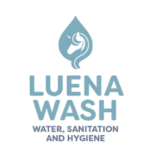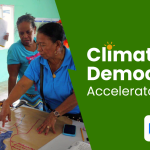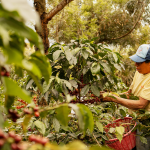Consolidated By Happy Tarumadevyanto | Independent Consultant | Environmental Asia | happy.devyanto@environmental.asia
A short dialogue with FSC DG on June 26, 2025.
Integrating multi-business forestry, including the development of ecosystem services, into FSC certification will indeed make the evaluation process more complex. However, this is a crucial step forward to ensure comprehensive forest sustainability.
Expanding the Scope of FSC Evaluation
Traditionally, FSC certification focused on forest management for timber and non-timber production, with a strong emphasis on environmental and social aspects. With the emergence of multi-business forestry and the focus on ecosystem services, FSC evaluations will expand to cover:
- Identification and Assessment of Ecosystem Services: PBPHs need to clearly identify which ecosystem services they are managing or enhancing (e.g., carbon sequestration, biodiversity conservation, water regulation, soil protection, or recreational value).
- Impact Measurement: This is the most complex part. FSC has an Ecosystem Services Procedure (FSC-PRO-30-006) that guides forest managers in demonstrating the positive impacts of their management on specific ecosystem services. This procedure requires PBPHs to:
- Establish a baseline: The initial condition of ecosystem services in the concession area.
- Develop a Theory of Change: Explain how forest management activities (e.g., restoration, habitat protection) will lead to positive impacts on specific ecosystem services.
- Select indicators: Determine measurable parameters to monitor changes in ecosystem services (e.g., forest biomass for carbon, number of endemic species for biodiversity, water quality).
- Measurement Methodology: Use credible and repeatable methods to measure these indicators.
- Third-Party Verification: Claimed positive impacts must be independently verified by an FSC-accredited certification body.
Benefits and Complexity of Integration
Despite its complexity, this integration offers several significant benefits:
- Increasing Forest Value: Not just from a production standpoint, but also from its ecological and social value. This allows PBPHs to attract investment or payment schemes based on ecosystem services (Payment for Ecosystem Services/PES).
- Transparency and Credibility: FSC certification provides vital third-party validation, increasing public and market trust in the sustainability claims of PBPHs.
- New Market Opportunities: Products and services linked to FSC-verified ecosystem services can access premium markets or attract environmentally conscious sponsors.
- Driving Innovation: Encourages PBPHs to develop more innovative and holistic forest management practices, moving beyond traditional timber harvesting.
The evaluation process will involve more in-depth audits, not only checking compliance with basic forest management standards but also assessing the PBPH’s ability to monitor, report, and improve their performance in providing ecosystem services. This will demand a more diverse set of expertise from auditors and more comprehensive data from PBPHs.
What are your thoughts? Do you think this complexity is proportionate to the potential benefits, especially for forest sustainability and the well-being of local communities?
The Indonesian government’s move to allow PBPH (Perizinan Berusaha Pemanfaatan Hutan) units to develop diverse businesses, including integrating ecosystem services into sustainable forest management, represents a significant shift. This multi-business forestry sector is primarily created for several key reasons:
Optimizing Forest Value and Sustainability
Traditionally, forestry has largely focused on timber extraction. However, forests offer a multitude of “ecosystem services” such as carbon sequestration, water regulation, biodiversity conservation, ecotourism, and non-timber forest products (NTFPs) like medicinal plants and honey. By enabling PBPHs to diversify into these areas, the government aims to maximize the economic, social, and ecological value of forest areas beyond just wood production. This moves towards a more holistic and sustainable approach to forest management.
Enhancing Economic Viability and Community Benefits
A multi-business model allows PBPHs to generate revenue from various sources, making their operations more financially resilient and less dependent on a single commodity. This increased economic viability can, in turn, lead to greater investment in sustainable practices and provide more benefits to local communities. It creates opportunities for new income streams, job creation (e.g., in ecotourism, NTFP processing), and potential for community partnerships that empower local populations who depend on the forest. This aligns with the goal of ensuring that forest management is socially beneficial.
Climate Change Mitigation and Biodiversity Conservation
Integrating ecosystem services, especially carbon sequestration and biodiversity conservation, directly supports Indonesia’s climate change mitigation commitments and efforts to protect its rich biodiversity. By incentivizing PBPHs to develop carbon projects, manage water resources, and protect critical habitats, the multi-business approach transforms forest areas into assets that contribute to global environmental goals while still providing economic returns.
Shifting from Wood-Oriented to Landscape Ecosystem-Oriented Approach
This policy signifies a paradigm shift from a solely wood-production focus to a broader landscape ecosystem-oriented approach. It encourages PBPHs to consider the entire forest ecosystem and its functions, promoting more integrated and responsible management practices. This aims to ensure that forest utilization does not negatively impact the environment and instead contributes to its restoration and resilience.
In essence, the multi-business forestry sector is designed to create a more sustainable, resilient, and inclusive forest economy that benefits not only businesses but also the environment and the communities living within and around forest areas.










